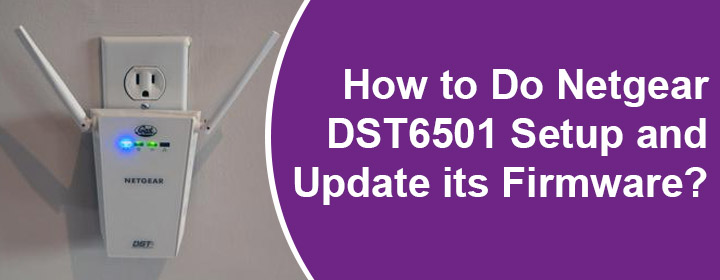Netgear DST6501 is an add-on adapter that can be used to expand DST networks with the help of electrical wirings. Currently, it works better with Nighthawk R7300 router and you can add up to 16 DST adapters in your house to improve the internet coverage. This blog will tell you about the setup and firmware update process of this very add-on adapter.
What is a DST Network?
A DST is a routing protocol for ad-hoc networks. For your information, ad-hoc networks are kind of temporary local area networks. If you set up this network permanently, multiple devices can use that network.
How to Set Up Netgear DST6501 Adapter?
Setting up the DST adapter is a very simple process. You just need to follow the instructions mentioned below. However, we are assuming that you have already set up a DST network. On the off-chance, you haven’t configured your DST adapter, you are suggested to refer to its Quick Installation Guide before installing the add-on adapter. Once done, follow these steps:
- Go to the room where you want to improve the WiFi coverage or add Ethernet.
- Plug your DST6501 into an electrical outlet and wait for the Power light to go solid green.
- In case the Power light does not light, you need to toggle the adapter’s Power switch to the On position.
- Press the WPS and DST Adapter Sync button on your DST router.
- Now, you are required to press the WPS and DST Router Sync button on your DST6501 adapter.
- You need to press this button for 2 seconds.
- The Power LED of your DST adapter and the DST LED on your router will blink.
- Soon, the DSP adapter light will turn green or amber and the router’s light will become solid blue.
- Once done, connect your computer to the DST router’s network and launch an internet browser.
- Go to routerlogin.net and complete the login process using “admin” as Username and “password” as Password.
- On the BASIC Home page, choose Remote DST Management.
- Follow the instructions to change the WiFi settings of your adapter.
- In this way, you can set up the Netgear DST6501 WiFi adapter in your house.
You can now connect your client devices to the adapter either using an Ethernet cable or with the help of a WPS button. Once you are done setting up the adapter, you can also change its settings by connecting to the mywifiext.net URL. However, your computer should be connected to the adapter’s network in that case.
How to Update Netgear DST6501 Firmware?
The firmware of the DST adapter can be updated either by connecting to the router’s network or with the help of the DST6501 adapter. Here are the steps involved:
| Update Firmware from DST Router | Update Firmware from DST Adapter |
|---|---|
| From a computer connected to the DST router, go to routerlogin.net. | Connect your PC to the Ethernet port on the adapter using a LAN cable. |
| Log in using the valid details and select Remote DST Management. | Go to mywifiext.net and log in with the help of the adapter’s details. |
| Find the Update DSP Adapter Firmware column. | On the Status page, select Maintenance > Firmware Update. |
| Once found, select Update all. | Select Check > Yes (if a new firmware is available). |
| This will start the firmware update process and it will end in a few minutes. | The adapter will download the firmware and begin the update process. |
In this manner, you can update the firmware of your Netgear adapter. Although the process is very similar to updating the Netgear extender firmware via the 192.168.1.250 IP, minor differences are there. Also, you will be able to click the Update All button only if all adapters present in your home network need to be updated.
The Conclusion
That’s all about setting up the Netgear DST6501 adapter and updating its firmware. You need to erase all the settings from the adapter in case you are unhappy with the performance or fail to set it up. To do that, press the Factory Reset button using a paper clip for 2 seconds. The Power light of the adapter will turn off after 3 seconds and become solid green for 30 seconds. This is a sign that you have erased the adapter’s settings and it can be installed again.


